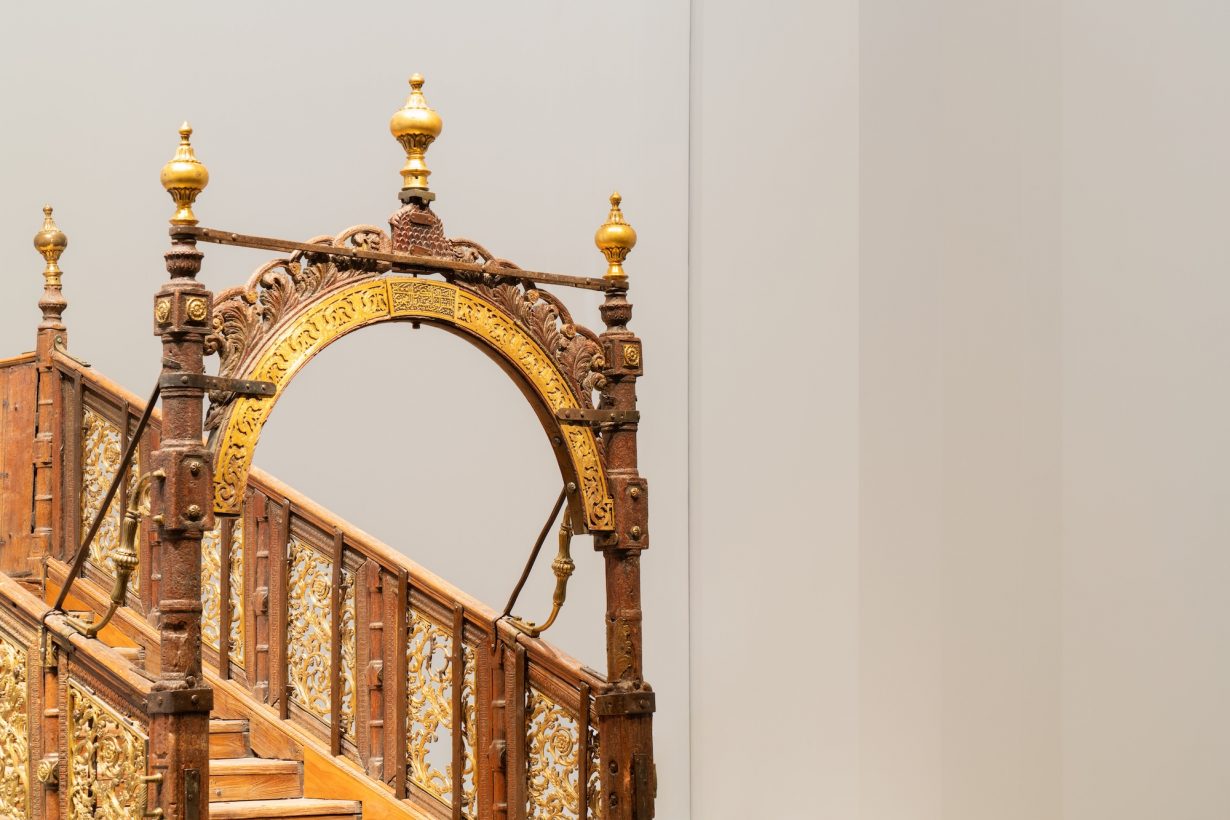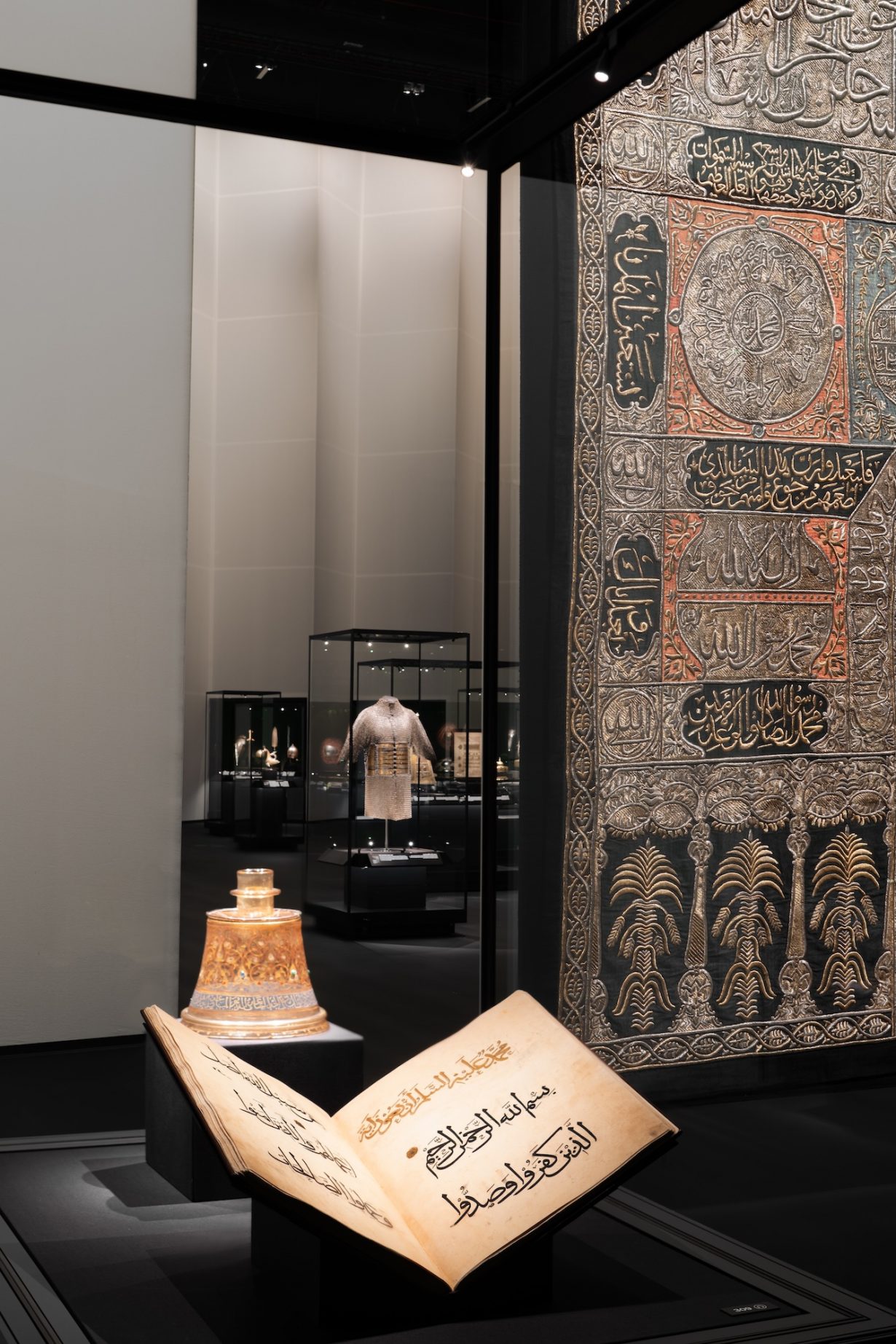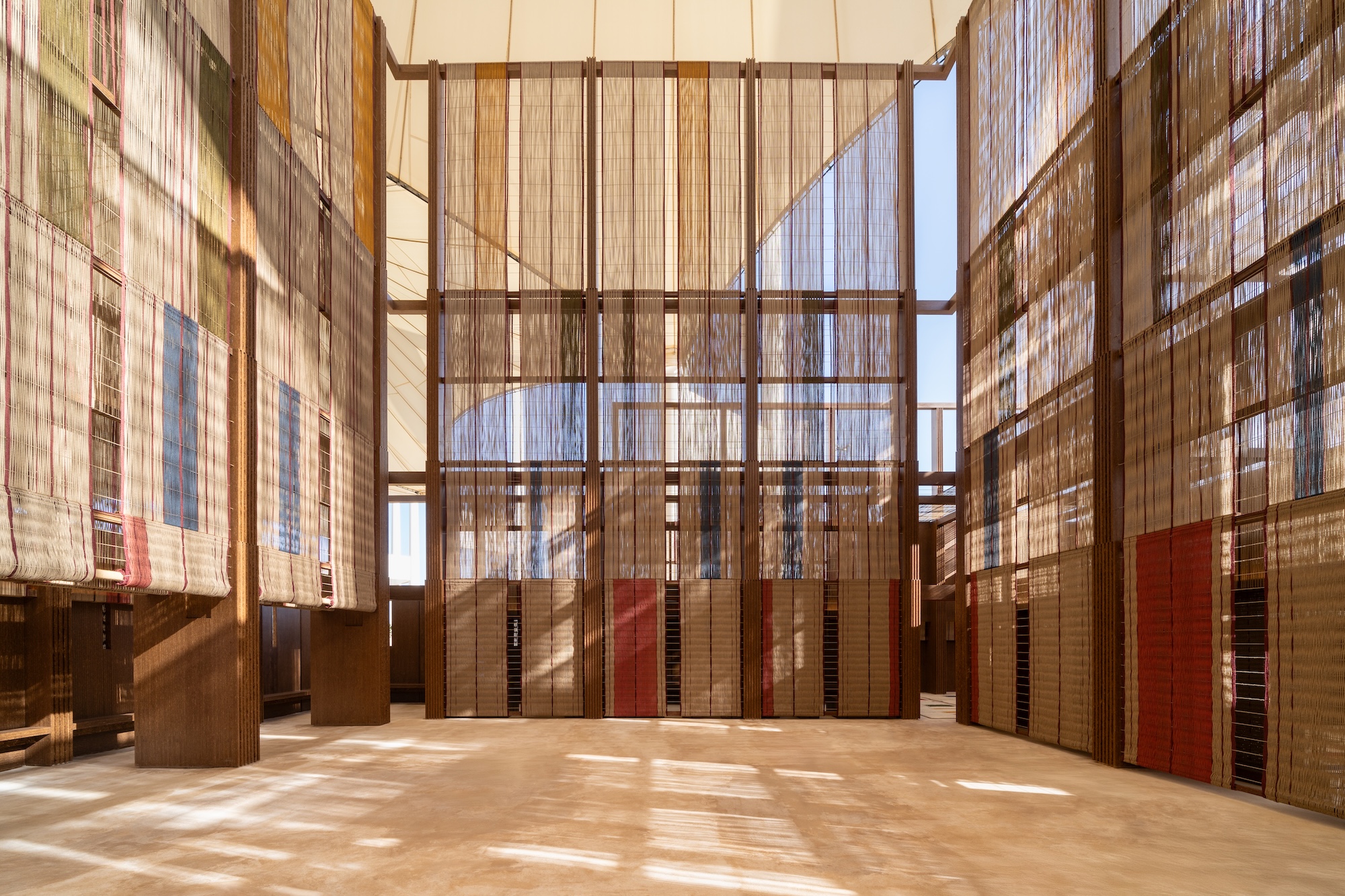And All That Is In Between demonstrates that many of the aspects of global culture, or the way culture circulates globally, are not actually a new phenomenon of our ‘globalised’ times
The title of the second iteration of the Islamic Arts Biennale, which aims to trace the ‘tangible and intangible influences of the Muslim world’, reiterates a recurring phrase in the Quran, generally deployed to emphasise the fact that God created everything: the heavens and the earth and… well, that’s where the title comes in. Repetitions, returns and translations are among the productive themes of this biennial. But it’s not God that made the objects on show here – which range from maps and books, to arms and scientific instruments, as well as, of course, the odd artwork; rather it’s humans. This is, above all else, a display of their ingenuity. Indeed, so vast is the hoard of manmade objects gathered here (more than 500 loaned objects), from collections ranging from that of Oxford’s Bodleian Library to the Louvre, and from the Vatican Library to the Uzbekistan national collection, with significant detours via the institutional and privately held treasure troves of neighbouring Gulf States, North Africa, South and Southeast Asia, that any spiritual content can’t help but be drowned within this ocean of material culture. In one display case there is a necklace of coins minted during the eighteenth century, in the name of Empress Maria Theresa of Austria, which were apparently prized in trading hubs such as Oman and the wider Indian Ocean World for the reliability of their silver content. They hang above a staged installation of older coins spewing out of an overturned vase.
On the evidence of the vast array of precious (both materially and culturally) objects it has managed to loan for this show, a cynic might take ‘the spiritual’ in this context to include an emphatic demonstration of the extent of contemporary Saudi Arabia’s ‘soft’ power. But then again, one thing you learn from this exhibition, the majority of its contents historic, with a few contemporary accents and footnotes (30 of them in the outdoor section of the Western Hajj Terminal), is that this kind of power (raw or soft) is nothing new. Near the beginning of the show stands a madraj, a moveable, four-metre-high teak staircase, used to facilitate entrance to the Kaaba, which was commissioned and donated by a South Indian nawab during the early nineteenth century, transported from Chepauk to Jeddah by the British East India Company, and then to Mecca, where it stood next to a later silver version donated by the nawab of a different Indian state. More subtle demonstrations of intercultural exchange, or nascent ‘globalism’, are provided in a section of the display that comprises an expansive and fascinating library of historic manuscripts, which include a thirteenth-century Greek translation of Persian astrological charts, translations of the Quran into various European languages (and into Hebrew), documents in ethnolects such as Judeo-Arabic and an Arabic translation of a thirteenth-century Indian treatise on poisons.

In keeping with that, the exhibition is also illuminating in terms of the way it encompasses the variety of forms that Muslim culture takes, from the wayang sadat puppet theatre of Indonesia (it’s an Islamic form of the celebrated storytelling tools from wayang kulit shadow-puppet theatre, featuring articulated buffalo-skin puppets moved by sticks), to the imposing black and gold drapery (kiswah) used to cover the Kaaba (it’s replaced annually, and the 2024 version was preserved to be shown here). A similar kiswah can be seen in Het Groote Mekka-Feest (The Great Mecca Feast), a 1928 film by the Dutch filmmaker George Krugers, which traces the path of pilgrims from the Dutch colonies in Indonesia to the holy city and is said to be the earliest celluloid documentary of the Hajj. It’s on show in one of two pavilions devoted to the pilgrimage sites of Mecca and Medina respectively – travel to which is the main reason many visitors come to Jeddah in the first place.
There are some genuine oddities on show too: it’s hard not to be distracted by an eighteenth-century steel and gold ‘hat-helmet’ (thought to be either of Indian or Turkish origin), which looks like nothing less than a metal cowboy hat with a spike emerging from its crown. And comes off as a weird pastiche of western fashions (Islamic headgear at this time, a label informs us, was largely brimless). Needless to say, historians speculate that this bizarre object was unique, rather than part of an exotic trend.

If one of the things this exhibition demonstrates is that many of the aspects of global culture, or the way culture circulates globally, are not actually a new phenomenon of our ‘globalised’ times (although in the age of Trump tariffs that may be coming to an end), and that in some ways we are always repeating patterns of the past, then it’s no surprise that the smattering of ‘new’ contemporary artworks don’t generally add much to the exhibition’s thesis. Saudi artist Bashaer Hawsawi’s My gift to you is a garden (2025), for example, is a mosaic-like pattern of red-bristled broom heads that conjures the rituals of physical and spiritual cleansing (she has more interesting works, using the same medium over at Hafez Gallery). Meanwhile, another Saudi artist, Anhar Salem, offers Media Fountain (2025), a survey of Arab identity in the age of the avatar, presented as a mosaic fountain spewing AI-generated imagery, offering an update of sorts to what has come before. You might think of it as an extension of the thinking that landed us with that eighteenth-century hat-helmet. An exception (and there are a few) is the prayer space (musalla), designed by Lebanon’s EAST Architecture Studio, AKT II engineers and artist Rayyane Tabet; it’s a modular structure, made of woven date-palm waste that won this year’s inaugural AlMusalla Prize. Evoking the structure of a loom (entering, it feels like you’re inside one), it nods to tradition and reinvention, and the pragmatics of creating structures in an arid environment.
This exhibition is so vast and overflowing with stuff that it really does give the impression that the curators of this biennial did want to include everything in the cluttered space of earth, by the end of it there’s not much space for heaven, or the ‘in between’, however constantly Islam is invoked. What, for example, are we supposed to think when confronted by the largest known example of a bronze Mamluk bowl (1342–45 CE) from the Furusiyya Collection? It’s gilded, engraved with calligraphy, animals, flowers and scrolls. It’s roughly 78 cm wide and 32 cm high. Sure, one can admire the craftsmanship, but the overwhelming sensation thrust upon you (not least by the accompanying label) is that it’s the size that counts. But perhaps it’s also that near-constant tension – that stuck-in-the-middleness – between the physical and the spiritual that makes this festival so interesting. Perhaps at the very moments that this celebration of material culture seems to sink under the weight of that material, it truly exposes the central contradiction of most biennials in this age: that fundamentally they celebrate the accumulation of stuff – objects that are never that distant from the worlds of ownership and capitalism. While at the same time they want to be celebrated for their immaterial messaging, whether that be drawn from the realms of politics, society or religion too. And perhaps the real reason biennials have multiplied like a plague across this earth is because we all want to dream that realising both of those goals is achievable.
Islamic Arts Biennale 2025: And All That Is In Between at Western Hajj Terminal, Jeddah, through 25 May
From the May 2025 issue of ArtReview – get your copy.
